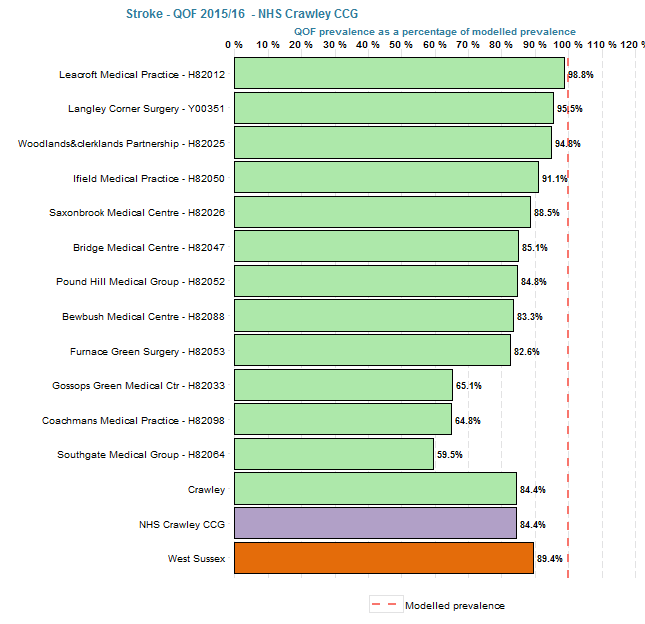Stroke
A stroke is a serious, life-threatening condition that occurs when the blood supply to part of the brain is cut off. Urgent treatment is essential to reduce the degree of damage that is likely to be caused by a stroke. Stroke is the third biggest cause of death in the UK and is the largest single cause of disability (SEPHO). Health conditions such as high blood pressure and diabetes, as well as lifestyle factors such as smoking, physical inactivity and poor diet can contribute to the risk of stroke.
The graph below shows a breakdown of QOF (Quality Outcomes Framework) information for each locality (distinguished by colour) with each bar representing an individual practice. Each bar represents the percentage of people on GP registers compared to the modelled estimates for the condition. A value below 100% suggests that fewer people registered at a GP are recorded with that condition than the modelled prevalence estimates, and a value over 100% suggests that the prevalence of people registered at a GP exceeds the modelled prevalence of people with that condition at that surgery.
Comparing the registered with the predicted prevalence provides an estimate of an unmet, or undiagnosed need within the local population. It should be noted that prevalence figures are produced by applying nationally researched assumptions to each GP practice’s population and, as such, should be treated with some caution.
The figure below shows that for the GP surgeries in NHS Crawley CCG, the QOF prevalence of stroke is below the modelled prevalence.

Data Sources
- QOF: 2015/16 (published in November 2016)
- Practice Population: GP Practice Population (as at 31st march 2016)
- Prevalence Model: Eastern Region Public Health Observatory